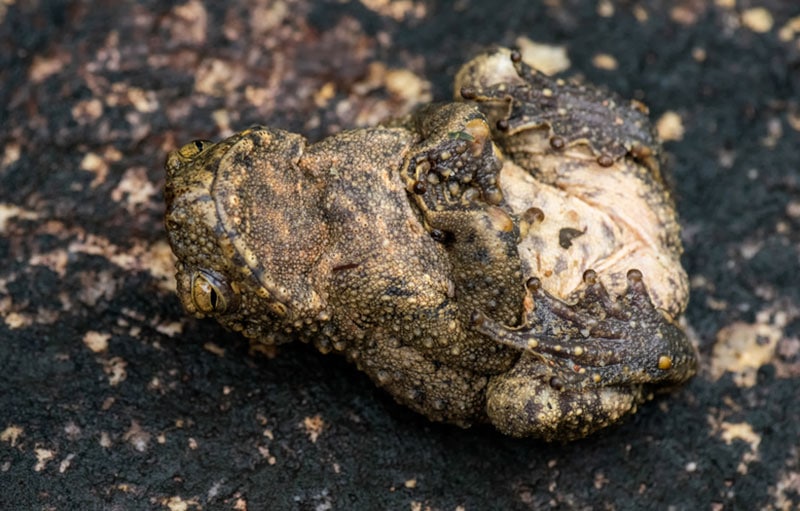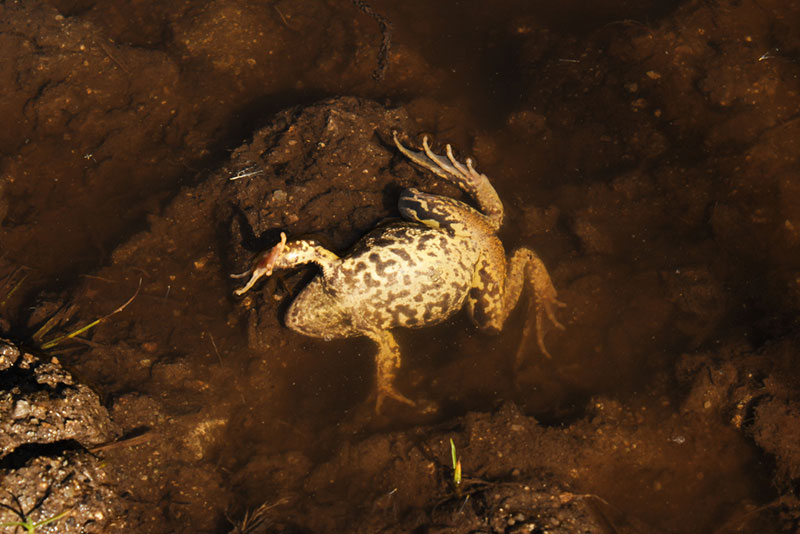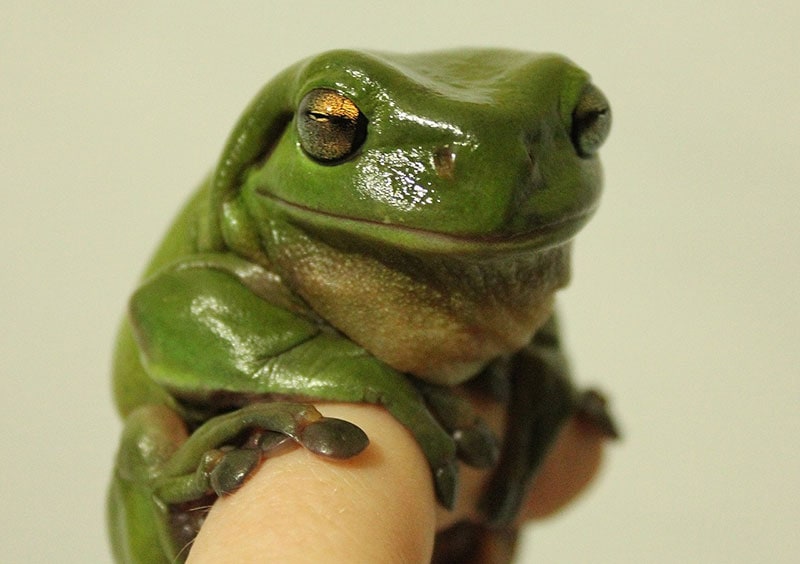Do Frogs Play Dead? Vet Reviewed Facts & FAQ
Updated on

Should you be skeptical if you come across a wild frog that appears dead? If your pet frog is still and unmoving in their habitat, should you start planning a funeral? Well, it turns out that frogs can play dead, so don’t rush to conclusions, even if the situation seems dramatic.
In this article, you’ll learn why frogs play dead, including some species that use this trick. We’ll also tell you how to determine if a frog is hibernating rather than simply playing dead.
Why Frogs Play Dead
In general, frogs play dead as a defense strategy. Wild frogs have multiple predators, including humans, and their size doesn’t offer them much protection. Some species, such as Poison Dart Frogs, secrete a toxic substance to ward off predators. For other species, however, playing dead might be their only defense if running (hopping) away isn’t an option. The precise term for this survival tactic is thanatosis.

How Frogs Play Dead
Playing dead looks different depending on which frog species is demonstrating the behavior. For example, when frightened, the Vietnamese Mossy Frog curls into a small ball to mimic death.
A more dramatic example can be found in South America, from Leaf Litter Frogs native to Southern Brazil. These frogs position themselves on their back with their legs stretched out and eyes closed. According to scientists who study the behavior, these frogs can hold this position for 2 minutes.
Playing Dead or Hibernating?
When the temperature drops, many species native to cold areas hibernate to survive. Because they cannot regulate their body temperature, frogs rely on external warmth to stay alive. Obviously, this is in short supply during the winter months. Like other amphibians, frogs undergo a hibernation-like state known as brumation.
Many frogs brumate underwater, which requires their normally oxygen-breathing bodies to undergo significant changes to stay alive. Their metabolism rate drops so they can survive long months without eating. This also decreases their overall body temperature.
Cold-blooded animals such as frogs need only minimal amounts of oxygen to live when their metabolic rate drops. During brumation, they can absorb excess oxygen they need through their skin, if needed.
Frogs playing dead will still be warm to the touch, while hibernating frogs will be cold. In addition, frogs don’t play dead for long periods.

How Do Frogs Appear When Brumating?
Because brumating frogs remain motionless and cold for long periods, it can be difficult to tell if they’re dead or just undergoing brumation. However, there are a few clues that can help. Brumating frogs protect their eyes by pulling them slightly into the head and covering them with the third eyelid. Dead frogs may have closed eyes or open, unprotected ones.
Another option is to look at the skin on the frog’s belly. As we mentioned, during brumation, the frog may resort to breathing through their skin more than usual. Increased blood flow causes the light skin of the belly to look red or pink.
What About Pet Frogs?
In a safe, protected environment, pet frogs living indoors shouldn’t have a reason to play dead. Controlled temperatures mean they typically won’t brumate either. However, if the temperature in their habitat gets too cold, you may notice the frog slowing down or appearing dead.
If you suspect your pet frog is too cold, gradually increase the temperature in their environment to see if they start to move around normally. Contact your vet for assistance if your frog doesn’t seem to be acting right.

Final Thoughts
Some frogs play dead to protect themselves from predators. Although they may take different body positions while acting out their death, these faking frogs usually return to normal quickly once the danger passes. Hibernating frogs may appear dead, so use the clues we discussed to determine their status. Pet frogs should be kept within the recommended temperature parameters for their species. Check the temperature in their enclosure frequently to make sure they don’t get too cold and appear to be playing dead.
- You Might Also Be Interested In: 12 Amazing Poison Dart Frog Facts
Featured Image Credit: Chattraphas Pongcharoen, Shutterstock











